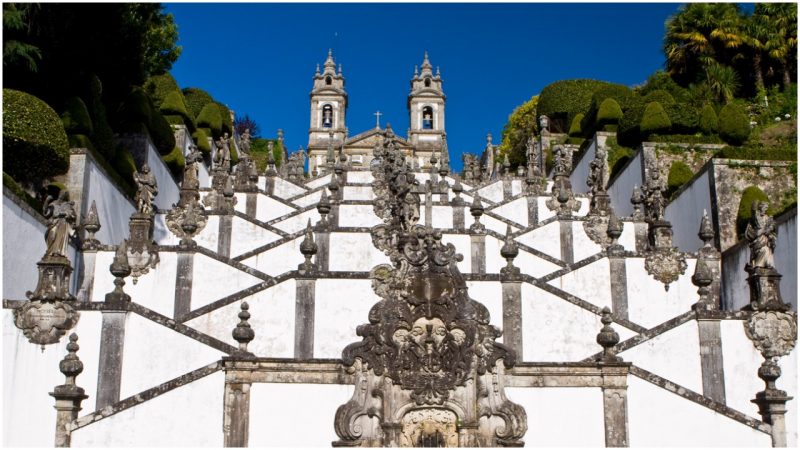Ever since the earliest days of Christianity, the practice of pilgrimage has been an integral part of European spirituality, reaching its peak during the Middle Ages, when thousands and thousands of people set out on foot to visit some of the many destinations across the Old Continent.
From the famed Camino de Santiago in Spain all the way to Fatima in Portugal and Saint Francis Way in Italy, Europe has some of the world’s most sacred pilgrimage sites that offer not only a unique spiritual experience but also a refuge from everyday life as well as some truly fascinating examples of architecture.
We are all aware that Europe does not lack pilgrimage sites, but when it comes to architectural beauty, a few of them stand out, with Bom Jesus do Monte (Good Jesus of the Mount) in Braga, Portugal, being one of the most beautiful.
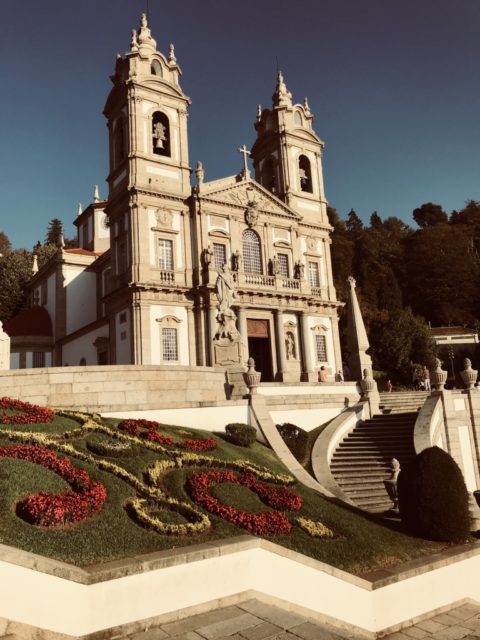
To say that this hilltop pilgrimage site is an architectural delight might not be sufficient to describe the actual beauty of it. Immediately after seeing it, you simply know that it must be one of the most photographed places in Portugal.
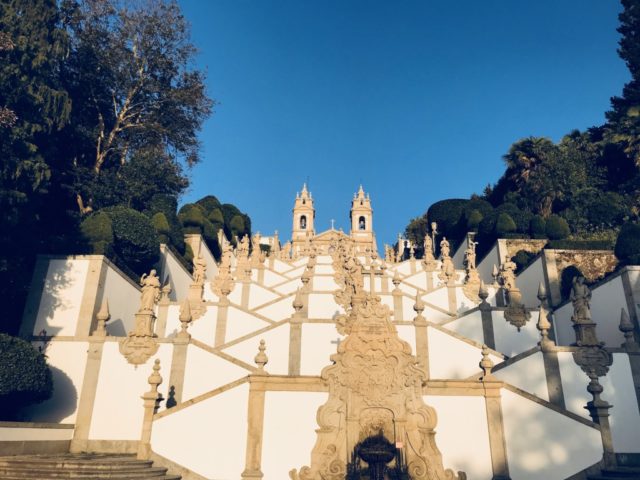
Set on the hillside of the Espinho Mountain, some 381 feet above the ground, Bom Jesus do Monte is dominated by its magnificent pilgrimage stairway that leads up to the impressive church. With around 580 granite steps that zig-zag to the top of the famed stairway and the many statues along the way, visitors see a combination of three architectural styles: Baroque, Rococo, and Neoclassical.
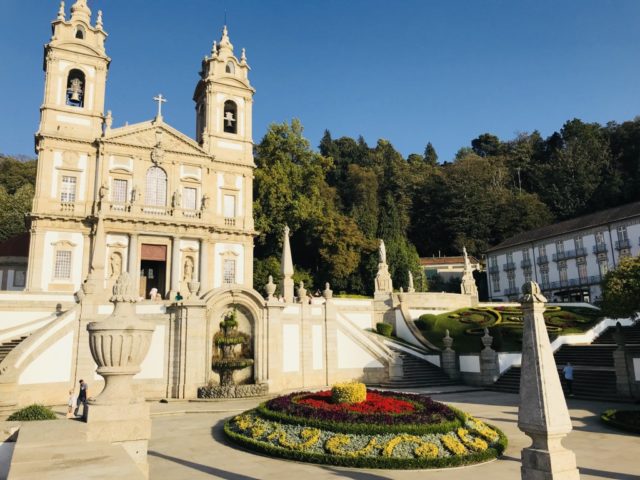
The current church is not believed to be the first one on this hilltop; over the centuries a few have been built with pilgrims reportedly being present on the site as early as the 14th century. It was Rodrigo de Moura Telles, the Archbishop of Braga, who commissioned the construction of the staircase back in the early 18th century, and since its completion in 1811, the site has become one of the most popular places of pilgrimage on the Iberian Peninsula.
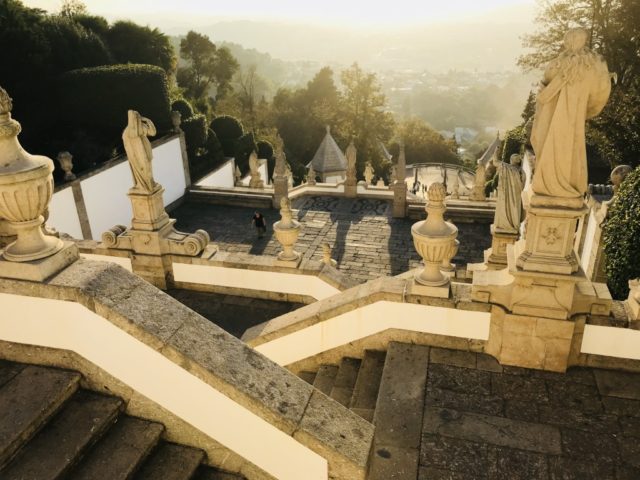
Penitent pilgrims climb the stairway on their hands and knees, in a way experiencing Christ’s suffering, with the goal to reach spiritual clarity of thought. As for the less devoted, and those who can’t climb the stairway, there is a hydraulic funicular lift that links the city of Braga with the hill. In fact, this particular hydraulic funicular lift is the first one on the entire Iberian Peninsula.
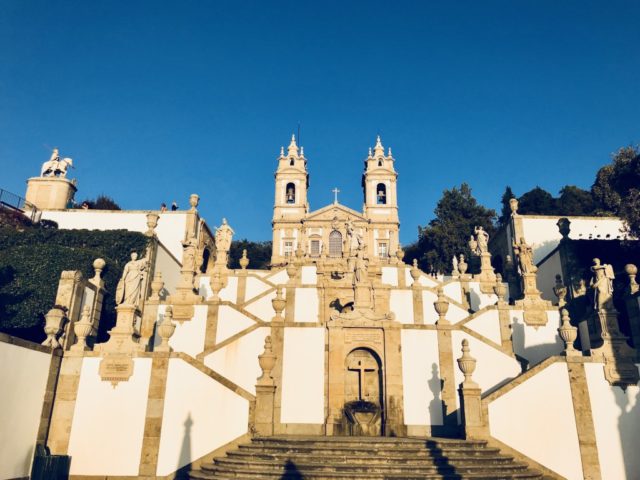
If you plan to visit Bom Jesus do Monte, we would recommend you to do it during the week before Easter, known as Holy Week or Semana Santa in Portuguese. This is the time when penitents climb up the stairway on their hands and knees, as they do again about six weeks after Easter, during Whitsun.
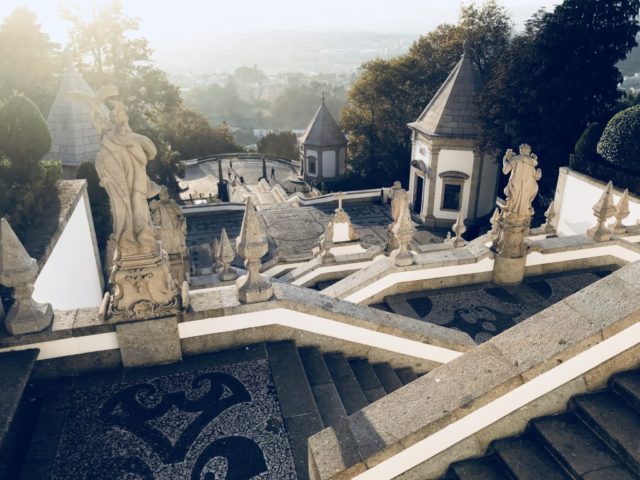
On the way up the stairs, there are platforms where numerous stunning statues and friezes depicting the life of Christ can be seen. There are also nine allegorical fountains with the first one symbolizing the wounds of Christ. The next five are dedicated to the senses (Sight, Smell, Hearing, Touch, Taste), and the final three are dedicated to the virtues (faith, hope, and charity or love).
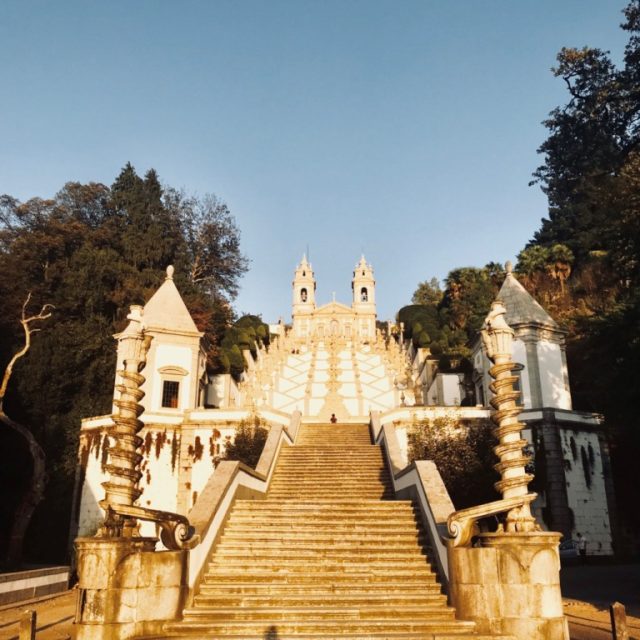
The stairway is obviously stunning, but the church on the hilltop is impressive as well. Surrounded by beautiful gardens, the church will surely provide a much-needed tranquillity of mind and body after the challenging climb.
The sweeping view from the top of the hill, one that includes the entire city of Braga and the beaches of Esposende and Viana do Castelo, is also worth visiting after having made it to Bom Jesus do Monte, one of the most unique and beautiful holy sites in Europe.
